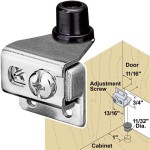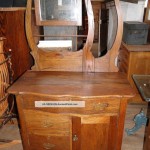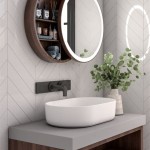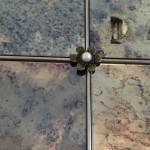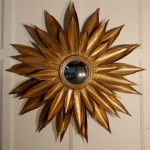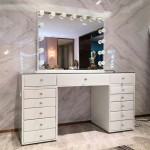Do Some Mirrors Make You Look Thinner?
The perception of body image is a complex phenomenon influenced by a multitude of factors, ranging from societal pressures and media portrayal to individual self-esteem and psychological well-being. One intriguing aspect of this phenomenon is the belief that certain mirrors can alter the perceived appearance of an individual, specifically leading to a thinner or more flattering reflection. This article will delve into the potential reasons behind this perception, examining the physics of mirrors, the manufacturing processes involved, and the psychological elements that contribute to the subjective experience of looking at one's reflection.
The core of the argument lies in whether mirrors possess the inherent ability to manipulate reflections, or whether the perceived difference in appearance is more a product of optical illusions, manufacturing imperfections, or psychological biases. It is crucial to dissect these various components to gain a comprehensive understanding of the factors that might contribute to the feeling that some mirrors make one look thinner than others.
Understanding the Basic Physics of Mirrors
At its most fundamental level, a mirror is an object designed to reflect light in a specular manner. This means that incoming light rays are reflected at an angle equal to the angle of incidence, creating a virtual image behind the mirror's surface. The vast majority of mirrors used for everyday purposes are flat, or plane, mirrors. These mirrors are typically constructed from a sheet of glass with a reflective coating applied to the back surface, often made from silver or aluminum. Ideally, a plane mirror should accurately reproduce the size and shape of the object being reflected.
However, the term "ideally" is important. Real-world mirrors are subject to manufacturing tolerances and imperfections. Even subtle variations in the flatness of the glass, the uniformity of the reflective coating, and the quality of the backing can introduce distortions into the reflected image. These distortions, while often imperceptible to the naked eye, can subtly alter the perceived proportions of the reflected object.
Furthermore, the environment in which a mirror is placed can also influence the perceived reflection. Factors such as lighting, the angle of view, and the surrounding colors can all contribute to the overall impression. Poor lighting, for instance, can cast shadows that accentuate certain features and obscure others, leading to a distorted perception of body shape. Similarly, the angle at which one views the mirror can also affect how the reflection appears. Looking at a mirror from a slightly oblique angle, for example, can compress the image horizontally, potentially creating a slimmer appearance.
Manufacturing Variations and Optical Illusions
The manufacturing process of mirrors, while highly refined, is not perfect. Variations in the thickness and flatness of the glass sheet can introduce slight curves or warps into the reflective surface. These imperfections, though often microscopic, can subtly distort the reflected image, potentially making an individual appear thinner or wider than they actually are. The reflective coating itself can also be a source of distortion. If the coating is not applied uniformly, it can create areas of varying reflectivity, which can subtly alter the perceived shape and size of the reflected object.
Specific types of mirrors, such as those used in funhouses, are intentionally designed to distort reflections for comedic effect. These mirrors often employ curved surfaces or uneven coatings to create exaggerated and unrealistic images. While these are extreme examples, they serve to illustrate the principle that the shape and quality of a mirror can significantly impact the appearance of the reflected image.
Beyond the physical characteristics of the mirror itself, optical illusions can also play a role in the perception of body shape. The human visual system is not a perfect recording device; it is prone to biases and distortions. For example, the perceived size of an object can be influenced by its surroundings. An object surrounded by smaller objects may appear larger than it actually is, while an object surrounded by larger objects may appear smaller. This phenomenon, known as the Ebbinghaus illusion, can be applied to the perception of body shape in a mirror. The size and shape of the surrounding objects in the mirror's reflection can potentially influence the perceived size and shape of the individual.
Another relevant optical illusion is the vertical-horizontal illusion, which suggests that vertical lines tend to be perceived as longer than horizontal lines of the same length. This illusion could contribute to the perception of thinness if a mirror has a subtle vertical distortion that emphasizes vertical lines in the reflection.
The Psychology of Perception and Body Image
Perhaps the most significant factor influencing the perception that some mirrors make one look thinner is the psychological aspect of body image. An individual's self-esteem, body image concerns, and preconceived notions about their appearance can all significantly impact how they perceive themselves in a mirror.
People who are dissatisfied with their body image are more likely to be critical of their reflection and to focus on perceived flaws. They may be more susceptible to the influence of subtle distortions or optical illusions in the mirror, interpreting them as evidence of their undesired appearance. Conversely, individuals with high self-esteem and a positive body image are less likely to be negatively affected by these subtle distortions and may even perceive them as flattering.
The power of suggestion can also play a role. If an individual believes that a particular mirror makes them look thinner, they may be more likely to perceive themselves as thinner when looking into that mirror, even if there is no objective difference in the reflection. This phenomenon, known as the placebo effect, demonstrates the profound impact of expectations and beliefs on perception.
Furthermore, the context in which a mirror is used can also influence perception. The lighting, the surrounding decor, and even the presence of other people can all contribute to the overall impression. For example, a mirror in a dimly lit dressing room may be more likely to create flattering shadows and minimize perceived flaws than a mirror in a brightly lit public space.
Societal pressures and media portrayals of idealized body types also contribute to the complex relationship between body image and mirrors. Constant exposure to images of thin and conventionally attractive individuals can lead to unrealistic expectations and a heightened sense of self-criticism when comparing oneself to these idealized standards. This can further exacerbate the tendency to perceive flaws and distortions in one's reflection.
In conclusion, the perception that some mirrors make one look thinner is a multifaceted phenomenon influenced by a combination of physical, optical, and psychological factors. While subtle variations in mirror manufacturing and optical illusions can contribute to the perceived difference in appearance, the psychological aspects of body image and self-perception likely play a more significant role. Understanding these various components is crucial for developing a more realistic and positive relationship with one's reflection and fostering a healthier body image.
Here S How Skinny Mirrors Trick Women Into More Clothes Business Insider

Proof You Do Look Diffe In Every Changing Room Mirror Amanda Platell Writes Daily Mail

Why Do I Look Diffe In Mirrors 5 Common Reasons

Why Do I Look Diffe In Mirrors 5 Common Reasons
Why Do We Look Fitter In Gym Mirrors Quora

Fitness Expert Showcases How Diffe Fitting Room Mirrors Can Make You Look Completely Daily Mail

Are Skinny Mirrors Being Used In Popular Retailers Dressing Rooms I Decided To Find Out
Here S How Skinny Mirrors Trick Women Into More Clothes Business Insider

Why Do I Look Diffe In Mirrors 5 Common Reasons

Why Do Some Mirrors Make Me Look Skinnier Than Others Here S The Truth About Fat And Slim Sun


